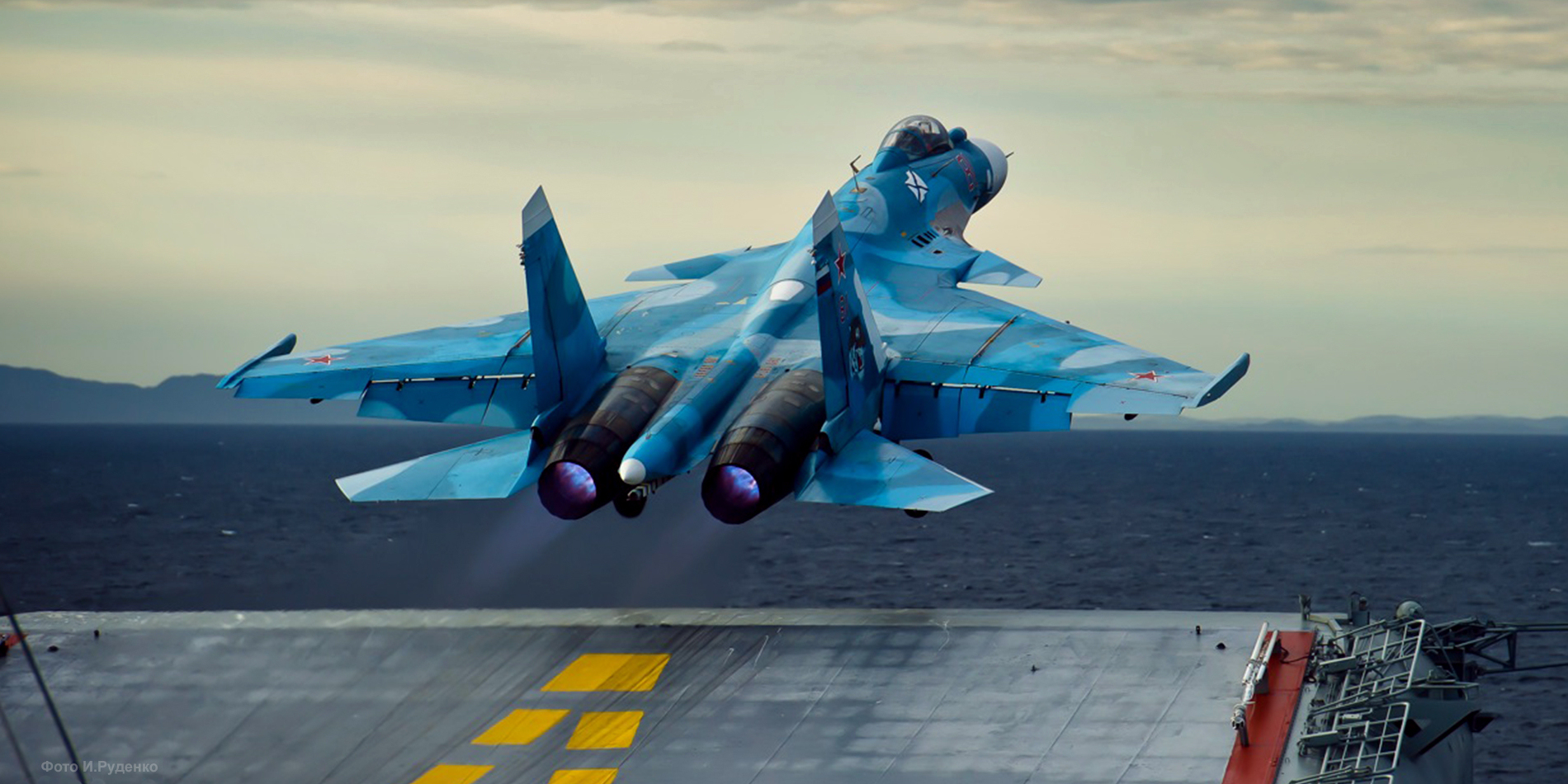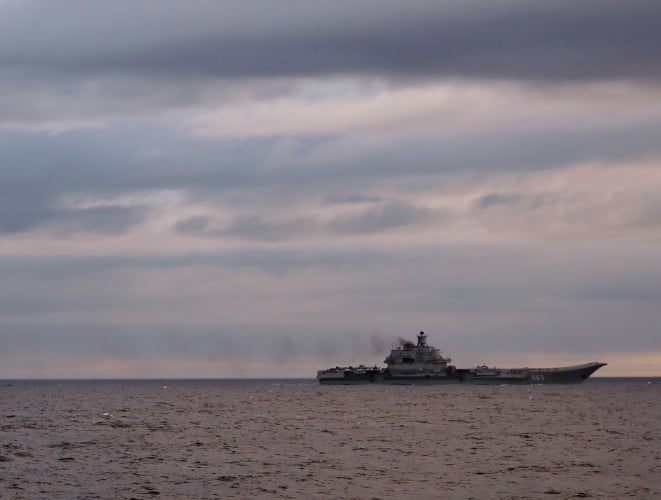
A second Russian fighter has crashed attempting to land on the carrier Admiral Kuznetsov, according to a Monday statement from the Kremlin.
The Sukhoi Su-33 (NATO reporting name Flanker-D) crashed after trying to land on Saturday on the carrier operating off the coast of Syria.
“While landing after completing a combat task in the Syrian sky, a Su-33 fighter jet skidded off the dock because the cable of arresting device broke,” the ministry said, according to the Russian state-controlled site Sputnik.
“The pilot ejected and was immediately brought aboard the Admiral Kuznetsov heavy aircraft carrier by rescuers. His life is not in danger.”
According to the MoD, carrier operations resumed after the pilot was recovered.
“The ship-based aviation continues its flights in accordance with its tasks,” read the statement.
The crash of the Su-33 follows the Nov. 12 loss of a Mikoyan MiG-29K during an attempted carrier landing on Kuznetsov, after a loss of fuel to the engines resulted in the fighter crashing.
While the Russians did not outline specifics, it appeared the MiG ran out of fuel while the crew was clearing the deck from a previous arrestor cable break.

The two crashes show potentially weaknesses in their naval aviation enterprise.
The MiG crash – if it did result from the fighter running out of fuel – illustrates Russian naval aviation doesn’t have an organic aerial refueling capability. The Russians also have historically had a shortage of qualified aviators.
A new Russian naval aviation training facility that was set to open in 2015 is still not operational.
To make up some of the difference, Russians have used retired naval aviators to fill in gaps in personnel.
“A few years ago there were stories they were largely contractors as pilots,” Eric Wertheim — naval analyst and author of U.S. Naval Institute’s Combat Fleets of the World — told USNI News on last month.
“They’ve been trying to pass that skill on but there’s not the ability to do that because the pool is small and they’re not a lot of facilities available.”
Kuznetsov — an aircraft carrying guided missile cruiser – is part of a four ship Russian naval force that deployed to the Eastern Mediterranean supporting Syrian forces loyal to Bashar al-Assad. The flotilla includes cruiser Peter the Great and two Udaloy-class guided missile destroyers.





